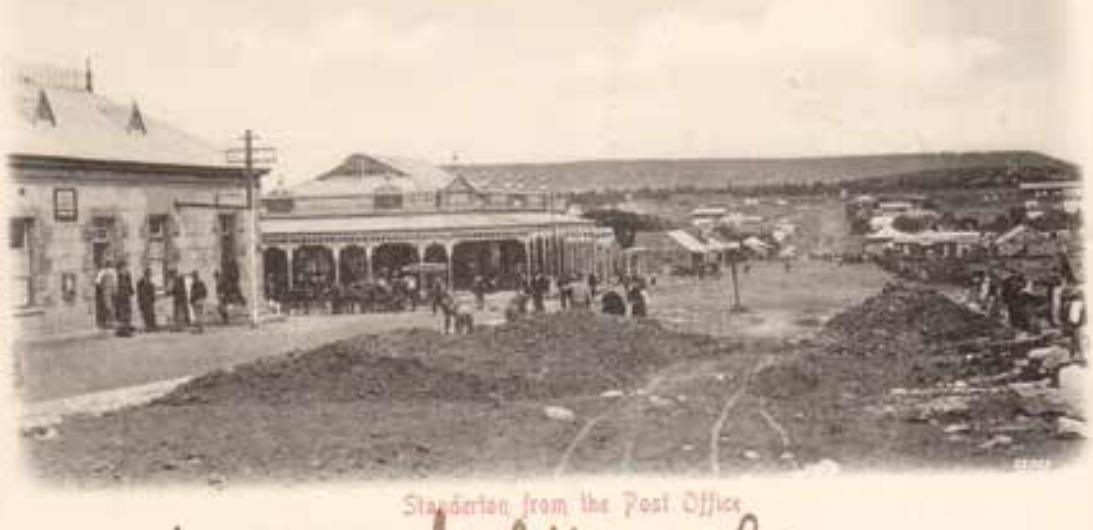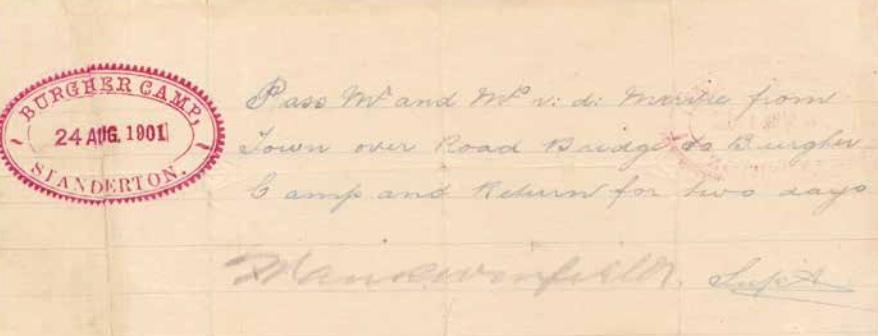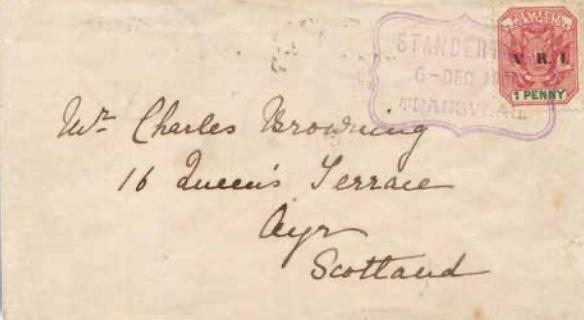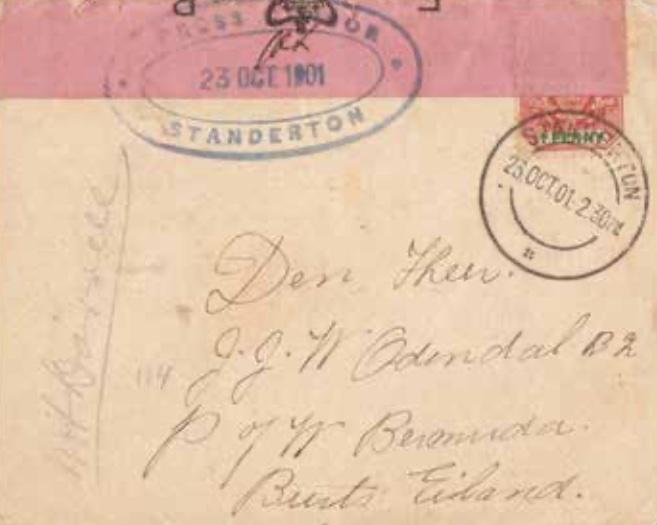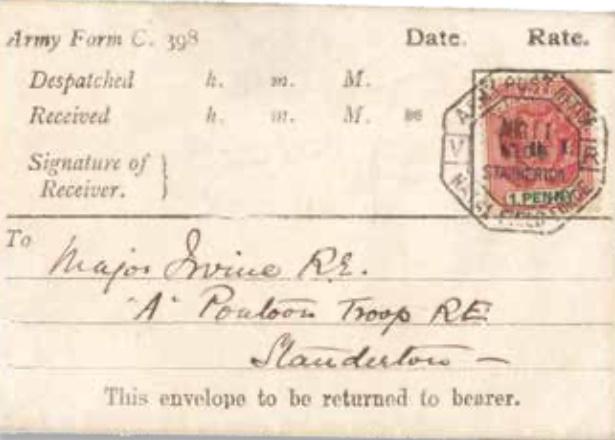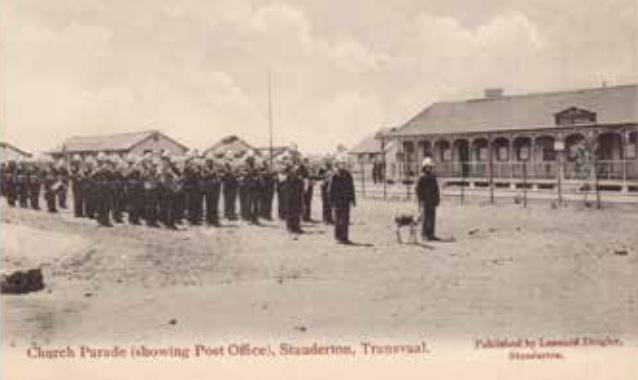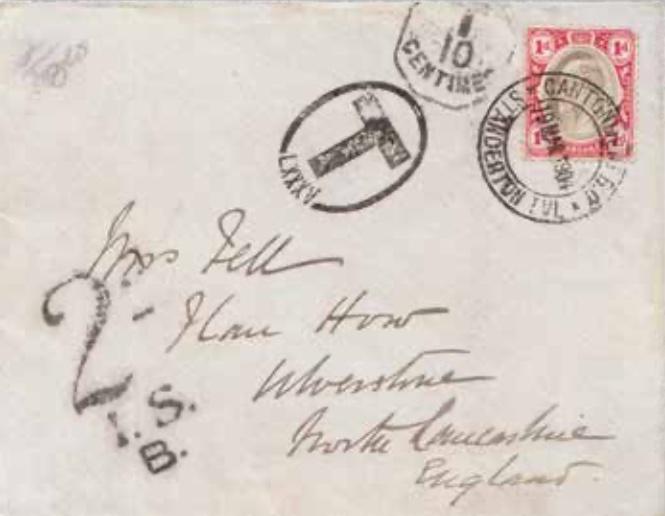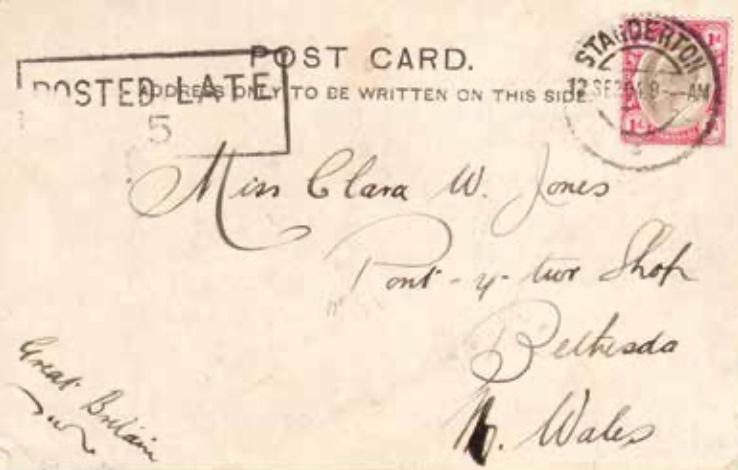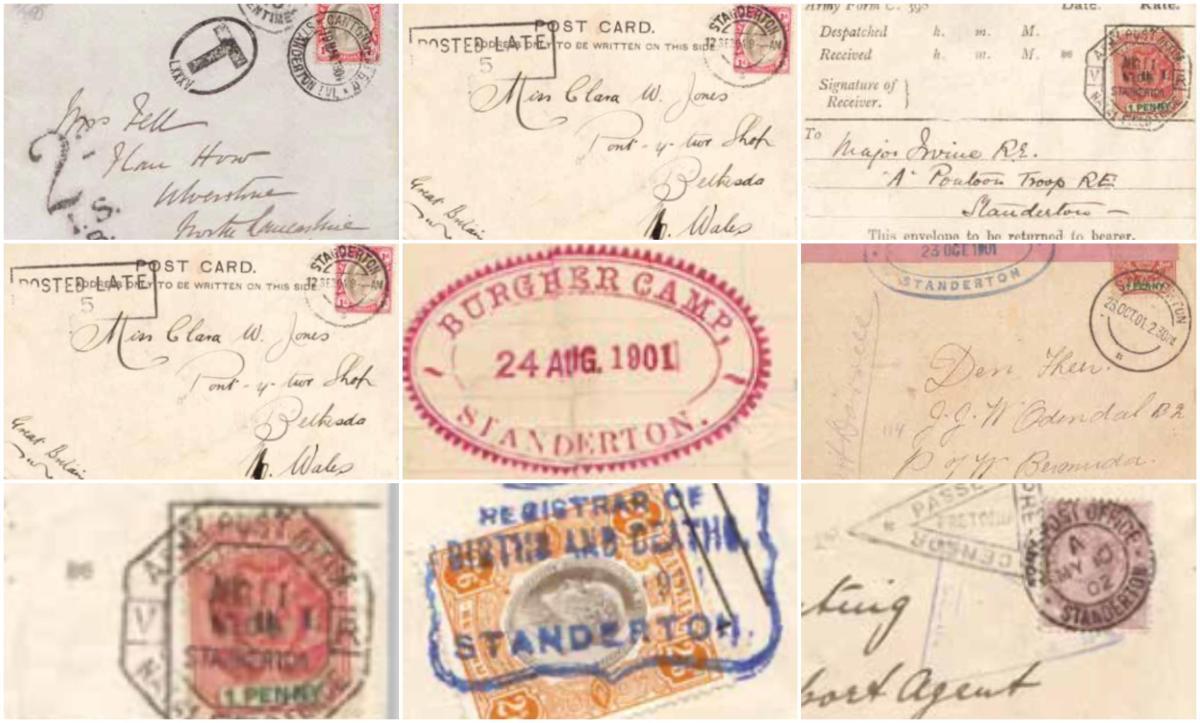
Disclaimer: Any views expressed by individuals and organisations are their own and do not in any way represent the views of The Heritage Portal. If you find any mistakes or historical inaccuracies, please contact the editor.
Wars, battles, and the occupation of countries and regions by military forces had a major impact on the postal systems of towns in those areas. The result, from a philatelic point of view, is that it provides postal history collectors with a variety of interesting fields of study and collecting. The interest in the postal history of the war led to the establishment of The Anglo-Boer War Philatelic Society in the UK in 1957. This Society leads the study of the Postal History and Usages of the Anglo-Boer War (1899-1902) in South Africa.
Introduction: The Anglo-Boer War (1899-1902)
Giliomee and Mbenga stated, in their book New History of South Africa, that the Anglo-Boer War (1899-1902), also known as the South African War, remains the most terrible and destructive modern armed conflict South Africa has experienced. This conflict helped shape the modern South Africa and marked the end of a long history of British conquests of South African societies, both black and white.
The British, by the end of the war, had been forced to mobilise almost 450 000 imperial soldiers to defeat the Boer forces which comprised, at its height, of at most 80 000 combatants. Of the roughly 116 000 Boer civilians housed in concentration camps some 28 000 died largely from measles, dysentery and pneumonia. It is estimated that at least 20 000 black people also died, mainly from epidemic diseases.
The impact of the Anglo-Boer War on the postal history of towns
Richard Stroud in his latest publication (2014) The Postal History of the Burgher, Refugee and Concentration Camps of the Anglo-Boer War during 1900 to 1903, clearly illustrates the impact of the Anglo-Boer War (ABW) from a philatelic point of view on just one aspect of the war, namely the camps. However, there are many more other philatelic aspects of the ABW that makes the war one of the most fascinating fields of collecting from a postal history point of view.
The aim of this article is to use Standerton in the Transvaal as a case study to illustrate the impact of the ABW and its aftermath on towns from a philatelic point of view. Only a selection of interesting postmarks and cachets emanating from the period of the ABW and its aftermath will be illustrated. The author’s interest in the Heidelberg/Standerton area arose from the fact that he was born and raised in the area and farmed for many years in the district. He also started a so-called ‘heimat’ collection of the area in the 1970s.
Postcard with the Standerton Post Office on the left
The occupation of Standerton by the British Forces in June 1900
Standerton was a small town in the Zuid-Afrikaansche Republiek (ZAR) on the railway line running from Johannesburg to Durban, when the war broke out in October 1899. The ABW impacted every aspect of life in the Standerton area. The fact that Boers serving in the Standerton Commando under Commandant H.J. Alberts took active part in the war, coupled to the importance of the main railway line from Johannesburg to Durban running through Standerton, drew this area even deeper into the war. The railway line being strategically as well as tactically important in war circumstances, for both sides, resulted in the movement of numerous British soldiers through the town.
When the ABW broke out in 1899 the double circle canceller 24mm and 14mm diameter respectively with the place name at the top and ‘Z.A.R.’ at the bottom was used in the Standerton Post Office. This common canceller was introduced to nearly all post offices in the ZAR in 1894. As the British campaign gathered momentum, they gradually removed the letters ZAR from the canceller in the post offices in some of the captured towns.
As the Boer resistance began to crumble, Major-General C.F. Clery was instructed to move through Standerton on route to Heidelberg. A good first-hand account of what happened is given by Private Tucker in his diary:
23rd June 1900. We finished our march arriving at Standerton about 2.00 p.m. and pitched camp. We are here to rest for a few days. After all, we have marched eighty miles in five days!. We marched without opposition to Waterval and pitched camp, a distance of twelve miles.
During the second half of 1900 the British were disheartened by the constant attacks by Boers on their communication lines and transport. Kitchener, in response, developed a strategy based on erecting manned blockhouses along the railway line. This proved insufficient as the Boers also used the farms to hide from the British. Kitchener, therefore, felt compelled to destroy the farmhouses by burning them down. He was then confronted with the problem of what to do with the women and children. The solution settled upon, in December 1900, was to erect camps to house the woman and children.
The Standerton Burgher Camp was an important camp and many women and children from the surrounding farms were interned there. It was started by the military in December 1900 and then handed over to civil control in February 1901. It was located to the east of the railway station on both banks of the Vaal River.
Pass issued by Mr. Winfield to a certain burgher in the camp: “...from Town over Road Bridge to Burgher Camp and Return for two days” with the Burgher Camp Standerton cachet dated 24 August 1901.
W. K. Tucker was the first superintendent and Frank Winfield replaced him in June 1901. The census of 30 June 1901 recorded 3,154 burghers (670 men, 1,124 women and 1,360 children in the camp) This figure increased to 3,470 in June 1902. In February 1901, the General Superintendent of Camps, Maj Goodwin, reported negatively on the situation in the Standerton Camp. According to him the situation was pitiable in the extreme. The Reverend Theunissen played an important role in the camp. In August 1902 Frank Winfield reported: "As usual the Sunday afternoon Divine Service has been held in the Camp under the direction of the Revd Theunissen. These open-air services are well attended."
The Reverend N.J. Theunissen. He was the Boer minister in the camp in Standerton. There must have been a good relationship between him and Superintendent Winfield because he was frequently given permission to leave the camp to attend to his people’s problems. (Theunissen was the first Afrikaans-speaking person to play cricket for South Africa. He played against England in a test in the 1888-1889 season while he was still a student at the University of Stellenbosch).
Selection of postmarks and cachets used during the Anglo-Boer War (1899-1902) in Standerton
One of the most interesting cancellers used in Standerton was the ornate rectangular strike identified by Maj Ian Mathews (ret) as Type 20 in his publication Transvaal Philately. Similar designs were also recorded for Middelburg, Springs, and Krugersdorp. In the case of Standerton two similar types were used for administrative purposes in the District Commissioner's Office and the Registrar of Births and Deaths Office.
Cover with ornate rectangular STANDERTON date stamp dated “19 DEC 1900”. The British Forces occupied Standerton on 23 June 1900 with the post office being reopened by the British on 1 November 1900.
Towards the end 1900 the organisation of the British Army changed. Brigades ceased to exist as intact units and infantry battalions and artillery batteries became subdivided into detachments garrisoning the various towns and points on the lines of communication.
Most of the mail in the Standerton camp was censored and a variety of censor markings and cachets were used in the Standerton Burgher Camp. On the 15th July 1901, a burgher camp post office was started which was a great convenience to the refugees which formerly had to walk into Standerton.
The following four types of censor marks or cachets were used from June 1901 up until June 1902:
- An oval double circle with date used in different colours of ink used from 28 June 1901 to 29 May 1902
- An unusual four-line censor cachet that was used for a short period from 28 August 1901 to 28 November 1901
- A triangular type of cachet used from 25 August 1901 to 13 May 1902.
- A triple ring cachet used for a short period from 22 May 1902 to 19 June 1902.
An oval double circle censor mark with date used on 23 October 1901 on a cover posted from Standerton on the same date to a POW in Bermuda
Cover posted from Standerton ‘5 OCT 1901’ to Pretoria ‘7 OCT 01’ (back stamp). Letter censored as indicated by the four row censor mark
The forces operating in Natal which forced the Boers back from Colenso, relived the siege of Ladysmith and recaptured the coal country around Dundee and later occupied the eastern Transvaal up to the point at which junction was made with the forces coming up from the Cape and the Orange Free State. These forces were collectively known as the Natal Field Force with fixed post office date stamps in towns where they were based.
About the middle of the second half of 1901 so called ‘Field Post Offices’ were established in various towns such as Standerton. The British Army Post Office ceased operations on 16 August 1902 according to the PMG’s Report for 1903.
Pre-printed envelope posted from the ‘ARMY POST OFFICE NATAL FIELD FORCE STANDERTON’ dated 11 August 1900 addressed to Major Irvine in Standerton.
The Standerton and Standerton Cantonment Post Offices during the Transvaal Colony period 1903 - 1910
After peace was concluded in 1902, the various post offices started functioning as part of the Transvaal Colony. The first Transvaal Post Office Guide was issued on 1 July 1902 where all the postal rates and regulations were explained. In this guide the ‘Class of Office’ of Standerton was indicated as a Money Order Office. Hasso Reisener indicated that the military camp in Standerton was established by the Imperial Army in December 1900 and remained in use until 1909. The post office was handed over to civil control on 1 February 1904. Cape Post Office Circular No. 268 of 1 March 1904 stated that a post office ‘Cantonment Standerton’ had been opened.
The Standerton Cantonment Post Office
This post office was listed for the last time in March 1908. Three types of date stamps have been identified. The earliest recorded date stamp is 15 February 1904. Following the Anglo-Boer War the Transvaal colonial government also introduced a new series of tax stamps. Transvaal Postal Circular No. 23 of 1 August 1902 indicated the following: "To afford means of tracing an office at which a charge has been raised, taxing stamps will in future show distinctive numbers". Standerton was allocated the numeralcoded tax stamp ‘V’ and Standerton Cantonment ‘LXXXV’ (Fig. 12). A posted late cachet also with numeral 5 used in 1904 has been observed. This is an indication that there was possibly a consistency in the numbering system (Fig.13).
Cantonment Standerton B.O. date stamp 19 March 1904 with the Edwardian Tax mark LXXXV allocated to Standerton Cantonment.
A ‘Posted Late’ cachet used in Standerton in September 1904 with number 5.
Conclusion
The development of the postal history of Standerton and its surrounding postal agencies is interwoven with the socioeconomic development of the area, the building of the railway line to Durban, the occupation by the British, as well as the First and Second Anglo-Boer Wars. All of this can be illustrated by means of date stamps and cachets depicting these events. Towns like Standerton as well as many others affected by the Anglo-Boer War can be regarded as a ‘philatelic feast’ from a collector’s point of view.
Dr Gerhard Kamffer RDPSA, Pretoria Philatelic Society
Sources
- Board, Christopher, Franking Privileges in the Transvaal after the British occupation (1900-1904), The Transvaal Philatelist, Volume 50 Number 2, July 2015.
- Bührmann, W.E., Transvaal Taxing Stamps in The Transvaal Philatelist, Volume 33, No. 3, August 1998.
- De Jong R.C, Van der Waal G.M and Heydenrych, D.H. The Buildings Steam Engines and Structures of the Netherlands South African Railway Company, HRSC, Pretoria, 1988.
- Drysdall, Alan R., 1995, Transvaal, Revenue and Telegraph Stamps, Including Customs and Pass Stamps and Telegraph Stationery, James Bendon, Cyprus.
- Du Preez A.J.J., Die Geskiedenis van Standerton tot 1900, MAverhandeling, Potchefstroom University, 1977.
- Grobler, P.J.H.S., 1956, Die geskiedenis van die poswese van die Suid-Afrikaanse Republiek, unpublished D. Phil thesis, UNISA, Pretoria.
- Kamffer, Gerhard, Censor and other markings used in the Standerton Burgher Camp during the Anglo-Boer War, The Anglo-Boer War Philatelist, Volume 43, Number 2, June 2000.
- Kamffer, Gerhard, The functioning of the postal system in the Zuid-Afrikaansche Republiek /Transvaal in the period 1869 to 1899 using the Middelburg, M.W. Stroom, Utrecht and Standerton Post Offices as a case study, Part 3: The functioning of the Standerton (Stander's Drift) post office and its surrounding postal agencies (1876 – 1910), The Transvaal Philatelist, Volume 51, Number 2, July 2016
- Mathews Ian, Transvaal Philately, Reijger Publishers, Cape Town, 1986.
- Putzel, Ralph, The Encyclopaedia of South African Post Offices and Postal Agencies, Volume 4 (U-Z), Cape Town, 1990.
- Reisener, Hasso, The Special and Commemorative Postmarks, Cachets and Covers of South Africa, 1892-1975, Pretoria, 1975.
- Todd, Pamela & Fordham, David, Private Tucker's Boer War Diary, Elmtree Books, London, 1980.
Comments will load below. If for any reason none appear click here for some troubleshooting tips. If you would like to post a comment and need instructions click here.

